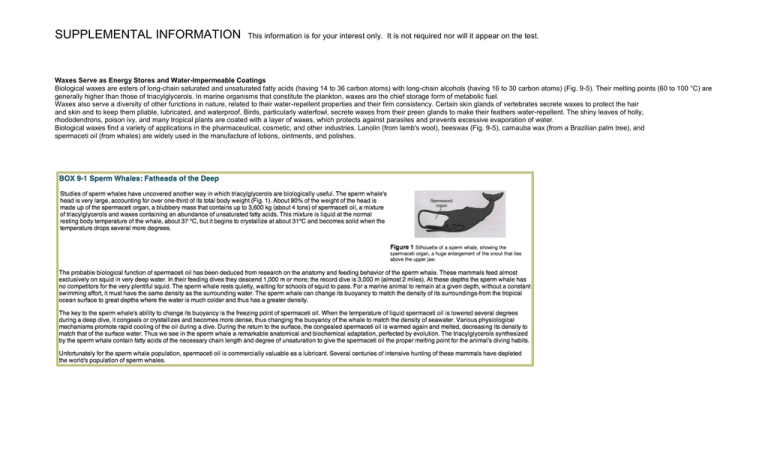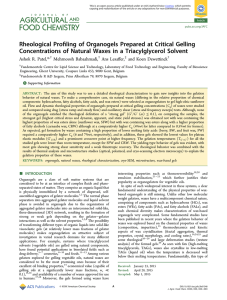SUPPLEMENTAL INFORMATION
advertisement

SUPPLEMENTAL INFORMATION This information is for your interest only. It is not required nor will it appear on the test. Waxes Serve as Energy Stores and Water-Impermeable Coatings Biological waxes are esters of long-chain saturated and unsaturated fatty acids (having 14 to 36 carbon atoms) with long-chain alcohols (having 16 to 30 carbon atoms) (Fig. 9-5). Their melting points (60 to 100 °C) are generally higher than those of triacylglycerols. In marine organisms that constitute the plankton, waxes are the chief storage form of metabolic fuel. Waxes also serve a diversity of other functions in nature, related to their water-repellent properties and their firm consistency. Certain skin glands of vertebrates secrete waxes to protect the hair and skin and to keep them pliable, lubricated, and waterproof. Birds, particularly waterfowl, secrete waxes from their preen glands to make their feathers water-repellent. The shiny leaves of holly, rhododendrons, poison ivy, and many tropical plants are coated with a layer of waxes, which protects against parasites and prevents excessive evaporation of water. Biological waxes find a variety of applications in the pharmaceutical, cosmetic, and other industries. Lanolin (from lamb's wool), beeswax (Fig. 9-5), carnauba wax (from a Brazilian palm tree), and spermaceti oil (from whales) are widely used in the manufacture of lotions, ointments, and polishes.








